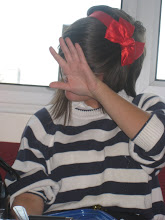
The Henry Moore Institute, Leeds, is known for it's award-winning exhibitions, being a fantastic research centre and also a sculpture archive. In it's latest exhibition, the definition of sculpture has been adapted, in which Alan Johnstons' drawings give a new perspective on a familiar space. The exhibition, named, 'Drawing a Shadow: No Object', see's his drawings all over the walls of the Henry Moore institute and is placed in the main gallery.
Without reading about the exhibition before you go, it is hard to recognise what the exhibtion actually is when you first walk in, you find yourself looking for work on the walls. It was not what I thought it would be, assuming it was drawings in the most literal sense. Where as, this exhibition displays and communicates the ideas of a structures shadow being formed against the walls of the gallery. The shadows are in fact the shadows of former buildings which stood before The Henry Moore Institute, so with the exhibition is formed a bit of historical knowledge.
Looking at the website after being to the exhibition, I found a quote from the curator and writer Charles Esche, who sums up the effect, that Johnston's drawings have upon the viewer: 'Alan Johnston's work is, at times, almost invisable - but almost not invisable at all.' I think this is a very true and reflective quote of the exhibition and is the feeling I left with.
The historical feel that people get from it, isn't just what's felt through observing it as a space, working with the pencil and applying it directly to the wall also brings the audience this feeling of touch and makes the experience more personal, as you know someone has been in this big space and applied their mark to it. Also, the drawings are all linked and one carry's on to the other wall space, this gives it a feeling of structure but also continuity and which reflects the idea of rigidness, seen in any building, as well as the idea of a shadow always being there.
Accompanying the rooms of shadow are some intricately placed drawings/paintings, showing his ideas and thoughts on the space and project at hand.
The most striking thing about the exhibition is that although it is not 3D in the literal sense, the drawings done, highlight the galleries as sculptural spaces. In such a big space, the structures shadows on the wall are quite overwhelming, then to get close to it and find that from afar the marks look simple and painless, but when you get close, the pencil marks are very defined and look as though the have been scratched in painstakingly. Looking round the exhibition, it's amazing to see that Johnston managed to maintain the same pressure of pencil the whole way round, from wall to wall.
Described by Johnston himself, their is a deliberate simplicity within the work, which he describes as giving the audience an experience which is '...neutral and clear.' This is often a way to describe the idea of shadows that are formed in our everyday lives - putting the audience and ease, described by Johnston as 'bringing a sense of themselves'. Another simplicity put to Alan Johnston which is clever, is the idea of the work being at the height it is on the walls. This draws the audiences eyes up, then for them to realise and observe fully the space that they have entered and are in. The drawings from almost brings out the idea of parts of the structure being windows and this is turn makes the audience in the space feel almost watched or looked upon.
Alan Johnston is particularly interested by the Japanese culture, which can then be said to be seen through his soft and intricate pencil marks on the walls. This idea of Japanese culture is also shown through the pieces of architectural sculpture pieces, encased in tall display cabinets, at eye height - ideas for his back garden in fact.
His influence of Zen - (The aim of Zen practice is to discover a Buddha nature within each person, through meditation and mindfulness of daily experiences). This idea of Zen is transcribed through Johnstons work throughout the exhibition, seeing it's focus on self-awareness. As the audience you can feel over-looked, possibly making you feel uncomfortable.
Over all the exhibition provokes the idea of the relationship between art and architecture in an interesting and thoughtful way. The detail and awareness (Zen influence again?) which has gone into the work and efforts of Alan Johnston are also important, through doing this project and drawing on the walls, Johnston's measurements were so accurate, that he even noticed a one centimetre imbalance on two facing walls whilst drawing.


No comments:
Post a Comment